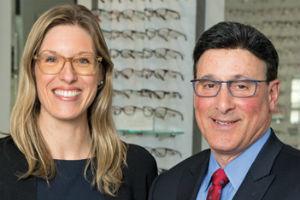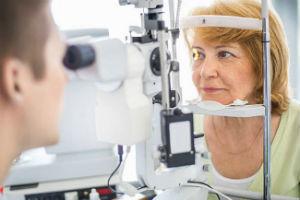
While September is officially Sports Eye Safety Month, we as optometrists should be embracing this conversation with our patients all year long. We have a significant role in preventing eye injuries to both children and adults who are playing sports both recreationally and competitively. According to Prevent Blindness America, every 13 minutes, an emergency room treats a sports-related eye injury. 43 percent of sports-related eye injuries are to children ages 14 and younger. This means a significant number of the patients we see every day are playing a sport recreationally or competitively, and we have a great opportunity to educate them on proper protection and safety.
As an optometrist with a specialty in sports and performance vision, I’m often asked:
What steps can optometrists take to educate patients about the risk of injury while participating in sports, and minimize their risks?
Schedule a Comprehensive Eye Exam First
All athletes, regardless of sport, age or level, should have a comprehensive eye exam before any new involvement in a sport. A pediatric screening is not enough to determine the ocular health and refractive error of a patient. Athletes should be corrected to their full potential before stepping out on the playing field.
Utilize Top Technology
When I see an athlete for a comprehensive exam, it is my duty to make sure I am providing them with the top technology so they can perform their best. For athletes needing correction, my go to contact lenses must provide clear, crisp, comfortable vision at all distances. The lenses must be stable and meet the needs of my patients . For patients needing the convenience of 1- day lenses, my go to lens is CooperVision’s clariti® 1 day lens. This lens is the winning combination of oxygen transmission and comfort with its silicone hydrogel material, UVA/UVB blocker*, and high Dk/t . With the benefit of having sphere, multifocal and toric options, I can fit almost any patient into this family.
The Biofinity® family of lenses provides my monthly patients with a silicone hydrogel lens with a low modulus, high Dk, sharp optics and comfort. With a lineup including Biofinity Energys, Biofinity, Biofinity XR, Biofinity Multifocal and Biofinity Toric, patients are sure to find a solution to their vision needs.
Proper Eyewear is a Must
Wearing property sports and safety eyewear/goggles is extremely important for any athlete, regardless of their refractive error. Athletes needing vision correction who are not candidates for contact lenses are educated on the need for an additional pair of eyewear for their sport both in the exam room and optical. Athletes who wear contact lenses or have no refractive error are also important candidates for the protection of eyewear. Any eyeguard or sports protective eyewear must be performance tested and approved to give the highest level of protection. We must be well versed in ASTM standards to make sure we are given our patients the correct eyewear.
Every dispensary should include a large selection of sports and safety eyewear. Optical staff should be fully trained and educated on proper lens selection and fitting of this eyewear.
Education is Key
Patients, parents, teachers, coaches, school nurses, athletic trainers and pediatricians should all learn about the risks associated with sports and what proper eyewear and protection should look like. We include brochures in our waiting room about sports protective eyewear, and ask every patient if they have any sports or hobbies they participate in. We spend time in the exam room educating the patient about proper correction and protection for their sport and introduce our optician into the conversation as part of our team approach. It is our duty to make sure patients of all ages are properly protected for their sport.
One of the biggest discussions I have in the exam room is that street eyewear has no place on an athletic field. I liken sports and safety eyewear to sneakers- athletes should treat their eyewear as part of their “gear”. I ask my younger athletes if they wear jeans or flip flops to play sports and often am met with laughter. I use this opportunity to include their day to day eyewear with their jeans, and have them switch to their “sneakers” (sports eyewear) for practice and games. Education is key!
With my expanded role in sports and performance vision, I spend time educating other performance professionals about the role of vision in sports. This includes how to enhance performance, but also talking about what questions they should be asking their patients and athletes, and how referral to eye care professionals is key for comprehensive and emergency care. Eye care professionals are an essential member of any team!
Triage and Treating Eye Injuries
Optometrists should be well versed in diagnosing, treating and co-managing common ocular injuries in sports. These include: cornea abrasion, corneal foreign body, blowout fracture, hyphema, laceration, periorbital ecchymosis, subconjunctival hemorrhage, iritis, concussion and retinal detachment. Staff and technicians must be educated on triaging and proper history taking, and practitioners should confident on treatment and referral procedures.
As an optometrist, parent and athlete, I feel it is my duty to educate and provide my patients of all ages on proper safety eyewear to see and perform their best and be as safe as possible on the playing field.
Where Can I Learn More?
The AOA Sports and Performance Committee has a vast amount of information available on their website. There are fact sheets, webinars, articles, pamphlets, manuals and brochures that are available to members.
Prevent Blindness America is a great resource for practitioners, patients and the public to learn more about sports and safety.
The Vision Council has a wealth of information about educating patients on sports eyewear, safety, and UV protection.
Jennifer Stewart, OD, is Chief Vision Officer at Performance 20/20, a sports and performance vision training facility in Stamford, Conn. She is also a partner at Norwalk Eye Care, a 2018 Coopervision Best Practices Award Winner.
She can be contacted at jen.stewart@perform2020.com
Where to find it
American Optometric Association
Prevent Blindness America
The Vision Council







